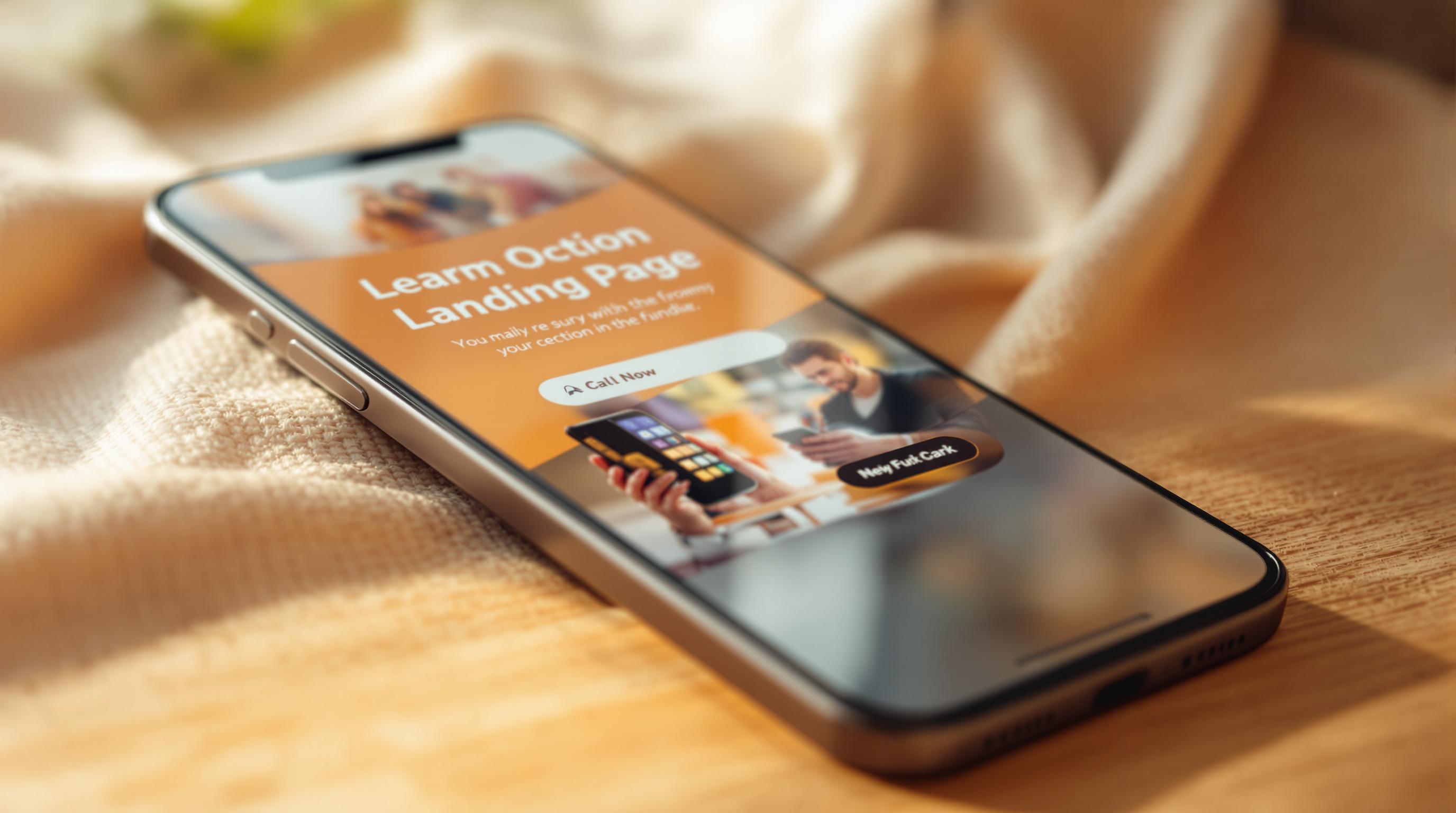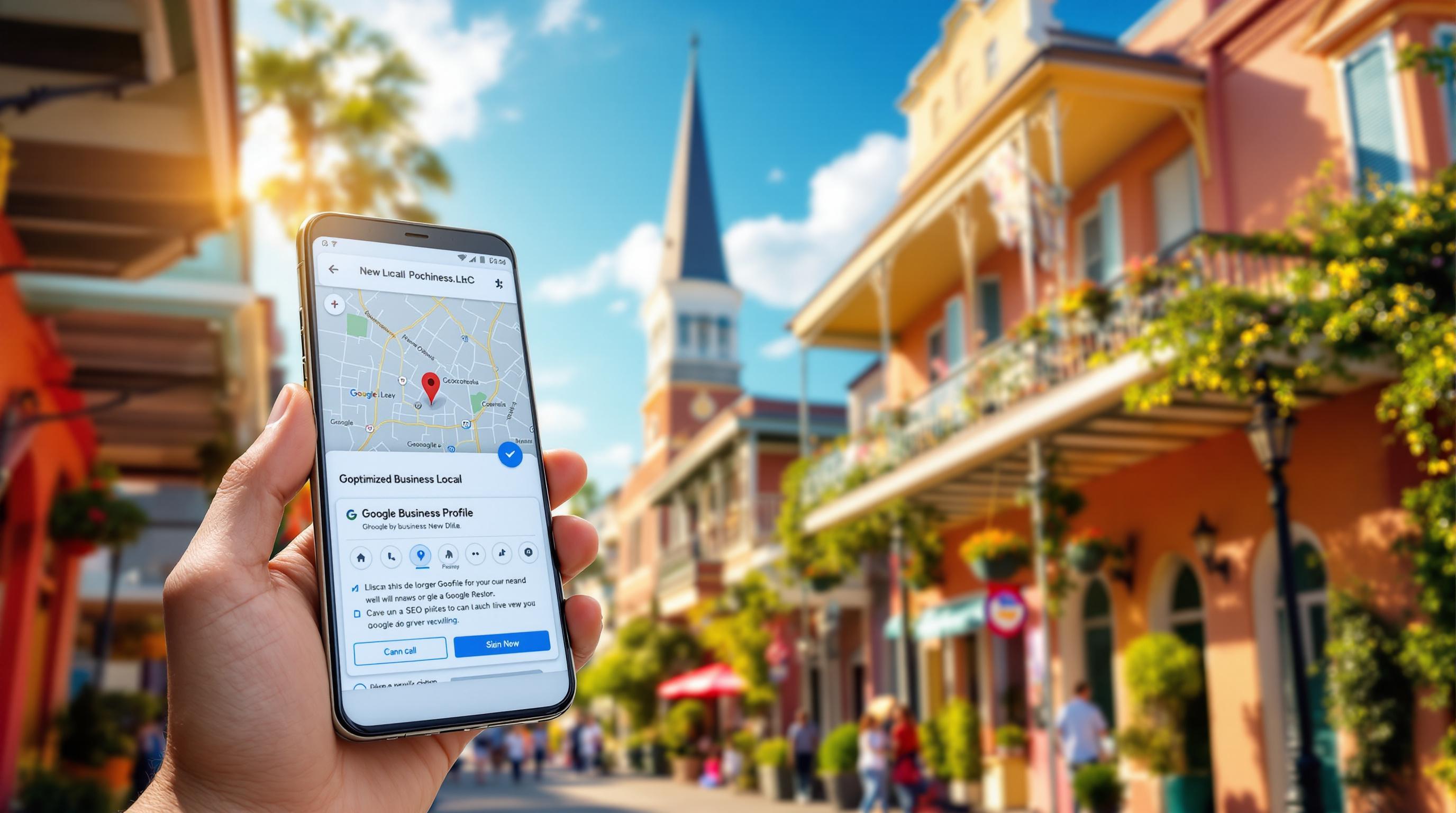Local SEO is critical for Minneapolis businesses to attract customers in the Twin Cities area. Why? 46% of all Google searches have local intent, and 88% of mobile users who search locally visit or call a business within 24 hours. Here's how you can improve your local rankings:
- Optimize Google My Business (GMB): Verify your listing, complete your profile, and manage customer reviews.
- Use Minneapolis Keywords: Add location-specific terms like "Minneapolis plumbing" or "Twin Cities restaurants" in your site’s content.
- Build Local Backlinks: Partner with local businesses, get listed in directories, and sponsor Minneapolis events.
- Add Schema Markup: Use location schema to help Google understand your business details.
- Track Results: Monitor keyword rankings, local traffic, and conversions to refine your strategy.
Key takeaway: Local SEO ensures your business appears when Minneapolis customers are ready to buy. Follow these steps to boost visibility and drive more traffic.
Complete Local SEO and Google My Business SEO Course

Step 1: Set Up Google My Business Correctly
A well-optimized Google My Business (GMB) profile is the cornerstone of improving your local search rankings in Minneapolis. Here’s how to make the most of your GMB presence in the Twin Cities.
Get Your Business Verified
Verification proves to Google that your business is legitimate. Start by creating a Google My Business account and claiming your listing. Most businesses in Minneapolis will receive a postcard with a verification code at their physical address. Once you have the code, enter it in your GMB dashboard to complete the process.
Fill Out Every Section of Your Profile
To boost your visibility in Minneapolis searches, your GMB profile needs to be complete and accurate. Pay attention to these key details:
| Profile Element | Best Practice |
|---|---|
| Business Name | Use your exact legal name - don’t add extra keywords. |
| Primary Category | Select the most specific category that fits your business. |
| Address & Service Area | Provide your full address, including suite/unit numbers, and cover Minneapolis-St. Paul. |
| Hours | Keep your hours up-to-date, especially for holidays or special events. |
| Visuals | Upload high-quality photos of your storefront, interior, and team. |
Manage Customer Reviews
Customer reviews play a huge role in both search rankings and building trust. According to LocaliQ, businesses that actively manage their reviews see 2.7x more engagement in local search results [2].
Respond to all reviews quickly and professionally. For negative reviews, acknowledge the specific issue and offer a solution. This shows potential customers that you value feedback.
"Google My Business is essential for improving local search visibility and engaging Minneapolis customers." [1][2]
Make sure to update your GMB profile regularly - at least once a month. This signals to Google that your business is active and involved in the Minneapolis community.
Finally, ensure your NAP (Name, Address, Phone) information matches exactly across your GMB listing and website. Even small inconsistencies can hurt your local rankings.
With your GMB profile in great shape, you’re ready to incorporate Minneapolis-focused keywords into your website content.
Step 2: Use Minneapolis Keywords
Using local keywords effectively helps your business show up in relevant Minneapolis searches, increasing local traffic to your site. Fun fact: Over 60% of Google searches now come from mobile devices, and about a third of those are location-based [2].
Find and Use Minneapolis Keywords
To get started, use tools like Google Keyword Planner to find Minneapolis-related search terms. Set the location filter to Minneapolis-St. Paul, then check search volumes for keywords tied to your industry.
| Keyword Type | Example | Search Intent |
|---|---|---|
| Geographic | Minneapolis + service | "Minneapolis web design" |
| Neighborhood | Area + business | "Uptown restaurants" |
| Local Terms | Twin Cities + product | "Twin Cities home builders" |
Here’s how to naturally include these keywords in your content:
- Write about local events or trends in your industry.
- Create service pages tailored to specific neighborhoods.
- Highlight success stories from local customers.
"Consistently optimizing your content with Minneapolis-specific terms keeps your business competitive in local search results" [1].
Optimize Page Titles and Descriptions
Your meta elements are prime real estate for local keywords. Here’s how to use them:
| Element | Format | Example |
|---|---|---|
| Meta Title | Service + Location + Brand | "Commercial Plumbing Minneapolis" |
| Meta Description | Value + Location + Call to Action | "24/7 Minneapolis plumbing services - Call now" |
| Headers | Location + Benefit | "Minneapolis Business IT Support: Same-Day Resolution" |
Don’t forget to include your current operating hours on location-specific pages. Searches for "currently open" businesses have tripled since 2015 [2]. Also, update your content’s schema markup to make it even more relevant for local searches.
Once you’ve nailed your Minneapolis keywords, the next step is building strong local backlinks to boost your visibility even further.
Step 3: Get Local Website Links
For Minneapolis businesses, building quality local backlinks is a key strategy. With 81% of consumers using Google to research local companies before making purchases [1], having strong local links can help you stand out. Here’s how to make it happen:
Collaborate with Local Businesses
Partnering with other Minneapolis companies can open up natural link-building opportunities while strengthening relationships in your community.
| Partnership Type | Link Opportunity | Example |
|---|---|---|
| Guest Blogging | Content Exchange | Write expert articles for Minneapolis Business Journal |
| Co-Marketing | Event Coverage | Host joint workshops with complementary businesses |
| Expert Interviews | Media Features | Share industry insights with local news outlets |
Add Your Business to Local Directories
Get listed in reputable directories like the Minneapolis Regional Chamber of Commerce, Minneapolis Business Journal, and other industry-specific associations. Matching your directory details with your Google My Business (GMB) profile ensures consistency, which can boost your local search rankings.
Support Community Events
Getting involved in Minneapolis events is a great way to earn backlinks while connecting with the community. Consider sponsoring events like Next Generation of Parks or local festivals. These sponsorships not only build goodwill but also often include backlinks from event websites.
"Local backlinks are often overlooked but are critical for attracting Minneapolis-based traffic" [1] - Traffic Kite Team
The Minneapolis Parks Foundation, which sees over 26 million visits annually [2], provides sponsorship opportunities that combine community engagement with online promotion:
-
Next Generation of Parks Events
These events bring together local cultural leaders and often receive media coverage, offering businesses a chance to gain visibility. -
Sunrise on the Mississippi
Sponsorship packages for this event include digital recognition, providing both exposure and backlinks. -
Local Festivals
Events like the HLI Festival of Color offer sponsorships that come with online promotional opportunities.
"All proceeds from Sponsorships go to Friends of Global Market and the mission to support the Midtown Global Market as a vital community resource" [2]
sbb-itb-d7fe25c
Step 4: Apply Local SEO Tools
Using specialized tools can help Minneapolis businesses stand out in local search results and attract more foot traffic. Did you know that 50% of mobile users who perform "near me" Google searches end up visiting a store? [2] That's a huge opportunity worth tapping into.
Add Location Schema Code
Location schema markup helps search engines understand key details about your business. Here’s a quick breakdown of the most important elements:
| Schema Element | Purpose | Example |
|---|---|---|
| LocalBusiness | Business type | Restaurant, retail store |
| Address | Physical location | Street, city, ZIP |
| GeoCoordinates | Precise location | Latitude, longitude |
| OpeningHours | Operating times | Daily schedule |
Once you've added the schema code, use Google's Structured Data Testing Tool to double-check that everything is accurate.
Create Localized Content
Producing content tailored to Minneapolis audiences is another key step. Here's what to focus on:
- Neighborhood-Specific Pages: Highlight areas like Northeast Minneapolis with content about local landmarks, unique services, or special promotions. Add community details to make it relatable.
- Local Content Ideas:
- Updates on Minneapolis news or developments
- Neighborhood guides and spotlights
- Event coverage or seasonal activities
- Business updates, like new offerings or changes in hours
"To create effective local content, businesses should conduct thorough research on the local area, including its demographics, attractions, and community events" [1].
These tools complement your Google My Business profile and keyword strategy, creating a strong local SEO foundation. Once these are in place, the next step is tracking your performance to refine your approach.
Step 5: Track Local SEO Results
Once you've rolled out your local SEO strategies, keeping an eye on your results is key to ensuring you're making an impact in the Twin Cities market.
Keep Tabs on Minneapolis Rankings
Use tools like BrightSite SEO to monitor how your Minneapolis-focused keywords are performing. Focus on these key metrics:
| Metric | What to Track | Why It’s Important |
|---|---|---|
| Keyword Rankings | Changes in positions for Minneapolis-specific terms | Tracks how visible you are in search results |
| Search Volume | Monthly searches for local keywords | Highlights market demand |
| Click-Through Rate (CTR) | Clicks divided by impressions | Gauges how effective your listings are |
| Local Pack Visibility | Appearances in map-based results | Reflects your local relevance |
Analyze Local Website Traffic
Dive into how your website is performing locally by checking these areas:
- Geographic Performance: Focus on traffic from Minneapolis-St. Paul to see how well you're connecting with local users.
- Mobile vs. Desktop Usage: Understand device preferences, especially since half of mobile "near me" searches lead to store visits [2].
- Conversion Tracking: Monitor actions like calls, map directions, or purchases from local visitors.
Use Data to Refine Your SEO
1. Tackle Underperforming Pages
Look for pages that aren’t resonating with Minneapolis users - those with high bounce rates or low engagement. Update them with more relevant local details and stronger calls-to-action.
2. Strengthen Local Content
Find your most successful neighborhood pages and apply those winning strategies to other parts of the Twin Cities. Update older pages to reflect current search trends.
3. Fine-Tune Technical Details
"To create effective local content, businesses should conduct thorough research on the local area, including its demographics, attractions, and community events" [1].
Use these insights to adjust schema markup and other technical elements. Regular reviews can help maintain rankings and uncover new opportunities to grow.
Conclusion: Minneapolis SEO Next Steps
The Twin Cities market favors businesses that plan their approach wisely. Here's a practical timeline to help you organize your local SEO efforts:
| Timeline | Action Items |
|---|---|
| Week 1-2 | Verify and optimize your Google My Business profile |
| Week 2-4 | Update content and integrate local keywords |
| Month 2 | Build local backlinks and submit to directories |
| Month 3 | Focus on technical SEO and implement schema markup |
| Ongoing | Track performance and make adjustments |
If you want to fast-track your results, consider working with an agency. BrightSide SEO offers a Local SEO Add-On service for $299/year, including Google My Business optimization for up to three locations. It's a cost-effective option for small businesses.
Key Strategies for Success:
- Add location schema markup and ensure mobile optimization
- Develop landing pages tailored to specific neighborhoods
- Publish content relevant to your local audience
- Collaborate with local businesses for cross-promotion
- Attend Twin Cities business events to boost visibility
Staying consistent with these efforts and monitoring your progress will help you stay ahead in the competitive Minneapolis-St. Paul market.
"Local SEO transforms your online presence, tailoring it to thrive in the Minneapolis market" [1]
With nearly one-third of mobile Google searches being location-based [2], maintaining strong local visibility is essential for long-term business growth in this area. To get started, conduct a thorough audit of your current online presence. This will help you pinpoint quick improvements and set priorities for strategies that fit your goals and the specific needs of the Twin Cities market.
FAQs
How to get ranked higher on Google Maps?
To boost your Google Maps ranking, focus on these specific actions recommended by Google:
| Ranking Factor | Implementation Tips | Impact |
|---|---|---|
| Profile Completion | Fully complete all sections in your Google My Business (GMB) profile | High |
| Location Verification | Finish Google's postal verification process | Critical |
| Review Management | Respond to all reviews within 24-48 hours | High |
| Photo Updates | Upload fresh, business-related photos weekly | Moderate |
| Local Relevance | Add Minneapolis neighborhood details and service areas | High |
Additional tips to improve your ranking:
- Make sure your website is mobile-friendly. With 60% of Google searches happening on mobile devices, this can directly impact your Maps ranking. Also, 50% of "near me" mobile searches lead to store visits [2].
- Keep your business hours updated, especially during holidays or seasonal events. Accurate information is crucial, as 95% of mobile searches in the U.S. happen on Google [2].
- Verify each business location individually for better accuracy and visibility in specific areas.
- Regularly update your product catalog, especially for seasonal offerings, and monitor how your business is performing in different Minneapolis neighborhoods.
"Local SEO transforms your online presence, tailoring it to thrive in the Minneapolis market" [1]
Lastly, ensure your location schema markup is correct to improve local search visibility. By applying these strategies, businesses in Minneapolis can strengthen their local reach and climb higher in Google Maps rankings.


